Numerical Simulation of Passive Cooling Beam and Its Optimization to Increase the Cooling Power
Abstract
:1. Introduction
1.1. Governing Equations
1.2. Mathematical Model of Passive Cooling Beam
- Geometric parameters: the width, length, inner diameter of the pipe, outside diameter of the pipe, height of the ribs, thickness of the ribs, and spacing of the ribs;
- Calculation of the required exchange surface for the heat exchanger: surface ribs and pipes.
- Selection of the coolant: interior temperature, 26 °C; cooling water temperature, 16 °C;
- Finding the physical properties of the liquids: ρ, c, ν and λ.The physical properties of the fluids are determined, and the temperature is changed, using, where appropriate, a function of the temperature.
- The choice of the flow rate in the heat exchanger: vv.
- Determination of the heat transfer coefficient: α.
- The efficiency at the middle logarithmic temperature difference is determined:
- Calculation of the heat transfer coefficient: k.
- Determination of heat flux: Q.
- The passive cooling beam has the following design parameters:
2. The Results of Simulations When Changing the Spacing of the Ribs, Sr
2.1. Simulation Results When Changing the Height of the Ribs, hr
2.2. Results of the Simulation When Changing the Spacing of the Ribs and the Height of the Ribs at a Given Thickness of the Rib
Simulation Results When Changing the Number of Tubes
3. Increasing the Cooling Power of the Passive Cooling Beam with Change in Temperature Gradient and Change in Coolant Flow
4. Model of the Boundary Layer for Rib Established through Differential Equations Describing Natural Convection
5. Results from Simulations
6. Natural Convection from Parallel Vertical Ribs
7. Numerical Modeling of Heat Transfer in Passive Cooling Beam
7.1. Modeling the Impact of the Height and Spacing of the Ribs, and the Cut-Off Layer in the Intercostal Space
7.2. Analysis of the Results Obtained
7.3. Computational Fluid Dynamics (CFD) Simulation of Passive Cooling Beam in the Room
- The viscous model was laminar (natural convection).
- The inlet and outlet of the convector were taken to be the interior.
- Aluminum rib: solid.
- The water in the tubes: liquid and its temperature.
- Copper pipe convector: wall thickness and heat transfer.
- The thickness and temperature of the room walls have been set to prevent leakage ambient temperature: temperature-(adiabatic wall). The temperature of the walls of the room and thickness were set to avoid leakage to the surroundings: temperature—(adiabatic wall).
- The acceleration of gravity, 9.81 m·s−1, was considered in the calculation.
8. Discussion and Conclusions
9. Limitations of the Work
Author Contributions
Funding
Institutional Review Board Statement
Informed Consent Statement
Data Availability Statement
Conflicts of Interest
Nomenclature
| B | width of passive ceiling convector (m) |
| c | specific heat capacity (J·kg−1·K−1) |
| d1 | inner diameter of the pipe (m) |
| d2 | outside diameter of the pipe (m) |
| g | gravity (m·s−2) |
| Gr | Grashof’s number (-) |
| Grx | local Grashof’s number (-) |
| Grx,krit | critical local Grashof’s number (-) |
| hr | height of the ribs (m) |
| k | heat transfer coefficient (W·m−2·K−1) |
| Lk | length of passive ceiling convector (m) |
| mv | mass flow of water (kg·s−1) |
| mvz | mass flow of air (kg·s−1) |
| nr | number of ribs (pcs) |
| nrur | number of pipes (pcs) |
| Nu | Nusselt number (-) |
| Pr | Prandtl number (-) |
| Q | heat flux (W) |
| Qchl | cooling power (W) |
| Ra | Rayleigh criterion (-) |
| Re | Reynolds number (-) |
| sr | spacing of the ribs (m) |
| Sr | outer surface of all the ribs (m2) |
| Srur | section of all free pipes (m2) |
| Sp | flow cross section (m2) |
| S1 | inner surface area of pipe (m2) |
| S2 | size of the heat transfer surfaces of the heat exchanger (m2) |
| S′1 | the inner surface area of the tube of the section concerned (m2) |
| tw | wall temperature (°C) |
| t11 | inlet water temperature (°C) |
| t12 | outlet water temperature (°C) |
| t21 | temperature of the cooling air (°C) |
| t22 | air temperature cooled (°C) |
| Δtstr | the middle logarithmic temperature difference (°C) |
| ΔT | temperature difference (°C) |
| T∞ | ambient temperature (°C) |
| vv | flow velocity in the pipe (m·s−1) |
| α | heat transfer coefficient (W·m−2·K−1) |
| αe | heat transfer coefficient on the outside (W·m−2·K−1) |
| αi | heat transfer coefficient on the inside (W·m−2·K−1) |
| αr | heat transfer coefficient on the rib (W·m−2·K−1) |
| αx | average heat transfer coefficient at the rib height (W·m−2·K−1) |
| β | coefficient of volume expansion (1/K) |
| δ | boundary layer thickness (m) |
| η | efficiency of the rib (%) |
| λ | thermal conductivity coefficient (W·m−1·K−1) |
| υ | kinematic viscosity of the fluid (m2·s−1) |
| ρ | density (kg·m−3) |
| σr | thickness of the ribs (m) |
| ψ | correction factor (-) |
| ς | correction factor (-) |
References
- Awbi, H.B. Ventilation of Buildings; Taylor & Francis e-Library: Abingdon, UK, 2003. [Google Scholar]
- Jícha, M. Přenos Tepla a Látky; Akademické Nakladatelství CERM: Brno, Czech Republic, 2001; Volume 160. [Google Scholar]
- Al-Waked, R.; Nasif, M.S.; Groenhout, N.; Partridge, L. Energy Performance and CO2 Emissions of HVAC Systems in Commercial Buildings. Buildings 2017, 7, 84. [Google Scholar] [CrossRef] [Green Version]
- Oosthuizen, P.H.; Taylor, D. An Introduction to Convective Heat Transfer Analysis; International Editions. William C Brown Pub., 1998; Volume 624. Available online: https://www.biblio.com/9780070482012 (accessed on 19 August 2021).
- Tian, Z.; Yin, X.; Ding, Y.; Zhang, C. Research on the actual cooling performance of ceiling radiant panel. Energy Build. 2012, 47, 636–642. [Google Scholar] [CrossRef]
- Okamoto, S.; Kitora, H.; Yamaguchi, H.; Oka, T. A simplified calculation method for estimating heat flux from ceiling radiant panels. Energy Build. 2010, 42, 29–33. [Google Scholar] [CrossRef]
- Tye-Gingras, M.; Gosselin, L. Comfort and energy consumption of hydronic heating radiant ceilings and walls based on CFD analysis. Build. Environ. 2012, 54, 1–13. [Google Scholar] [CrossRef]
- Koschenz, M.; Dorer, V. Interaction of an air system with concrete core conditioning. Energy Build. 1999, 30, 139–145. [Google Scholar] [CrossRef]
- Antonopoulos, K.A. Analytical and numerical heat transfer in cooling panels. Int. J. Heat Mass Transf. 1992, 35, 2777–2782. [Google Scholar] [CrossRef]
- Kim, J.; Tzempelikos, A.; Braun, J.E. Review of Modeling Approaches for Passive Radiant Ceiling Cooling Systems. J. Build. Perform. Simul. 2015, 8, 145–172. [Google Scholar] [CrossRef]
- Kim, J.; Tzempelikos, A.; Horton, W.T.; Braun, J.E. Experimental investigation and datadriven regression models for performance characterization of single and multiple passive chilled beam systems. Energy Build. 2018, 158, 1736–1750. [Google Scholar] [CrossRef]
- Nelson, I.C.; Culp, C.H.; Rimmer, J.; Tully, B. The effect of thermal load configuration on the performance of passive chilled beams. Build. Environ. 2016, 96, 188–197. [Google Scholar] [CrossRef]
- Halton. Available online: www.halton.com (accessed on 19 August 2021).
- TROX. Available online: www.trox.cz (accessed on 19 August 2021).
- FRENGER. Available online: www.frenger.co.uk (accessed on 19 August 2021).
- HPM Therm. Available online: www.hpmtherm.eu (accessed on 19 August 2021).
- Users Guide: Flunet Tutorial Guide; Release 2020 R1—© ANSYS, Inc.: Pittsburgh, PA, USA, 2020.
- Simos, Y.; Evyatar, E.; Molina, J.L. Roof Cooling Technique a Design Hand Book; Routledge: London, UK, 2005; Volume 172. [Google Scholar]
- VDI. Heat Atlas 2010, 2nd ed.; Springer: Berlin/Heidelberg, Germany, 2010. [Google Scholar]
- Tesař, V. Mezní Vrstvy a Turbulence; ČVUT: Praha, Czech Republic, 1996. [Google Scholar]
- Incropera, F.P.; Dewitt, D.P. Fundamentals of Heat and Mass Transfer, 1st ed.; John Wiley: New York, NY, USA, 1996. [Google Scholar]
- Moran, M.J.; Shapiro, H.N.; Munson, B.R.; DeWitt, D.P. Introduction of Thermal Systems Engineering: Thermodinamics, Fluid Mechanics and Heat Transfer; John Wiley & Sons, Inc.: Hoboken, NJ, USA, 2003. [Google Scholar]
- Standard: EN 14240:2004. Ventilation for Buildings—Chiled Ceilings—Testing and Rating. Brussels, Belgium, 2004. Available online: https://standards.iteh.ai/catalog/standards/sist/dbe4bcd1-949f-4ffd-a19b-7f1cb28f667c/sist-en-14240-2004 (accessed on 19 August 2021).
- Patel, K.; Armaly, B.F.; Chen, T.S. Transition from Turbulent Natural to Turbulent Froeced Cenvection Adjacent to an Isotermal Vertical Plate; American Society of Mechanical Engineers, Heat Transfer Division, (Publication) HTD, American Society of Mechanical Engineers (ASME), 1996; Volume 324. Available online: https://www.osti.gov/biblio/428134 (accessed on 19 August 2021).
- Nemec, P.; Caja, A.; Lenhard, R. Visualization of heat transport in heat pipes using thermocamera. Arch. Thermodyn. 2010, 31, 125–132. [Google Scholar] [CrossRef]
- Davarpanah, A.; Zarei, M.; Valizadeh, K.; Mirshekari, B. CFD design and simulation of ethylene dichloride (EDC) thermal cracking reactor. Energy Sources Part A Recov. Util. Environ. Eff. 2019, 41, 1573–1587. [Google Scholar] [CrossRef]
- Nabavi, M.; Elveny, M.; Danshina, S.D.; Behroyan, I.; Babanezhad, M. Velocity prediction of Cu/water nanofluid convective flow in a circular tube: Learning CFD data by differential evolution algorithm based fuzzy inference system (DEFIS). Int. Commun. Heat Mass Transf. 2021, 126. [Google Scholar] [CrossRef]
- Hoseini, S.S.; Najafi, G.; Ghobadian, B.; Akbarzadeh, A.H. Impeller shape-optimization of stirred-tank reactor: CFD and fluid structure interaction analyses. Chem. Eng. J. 2021, 413. [Google Scholar] [CrossRef]
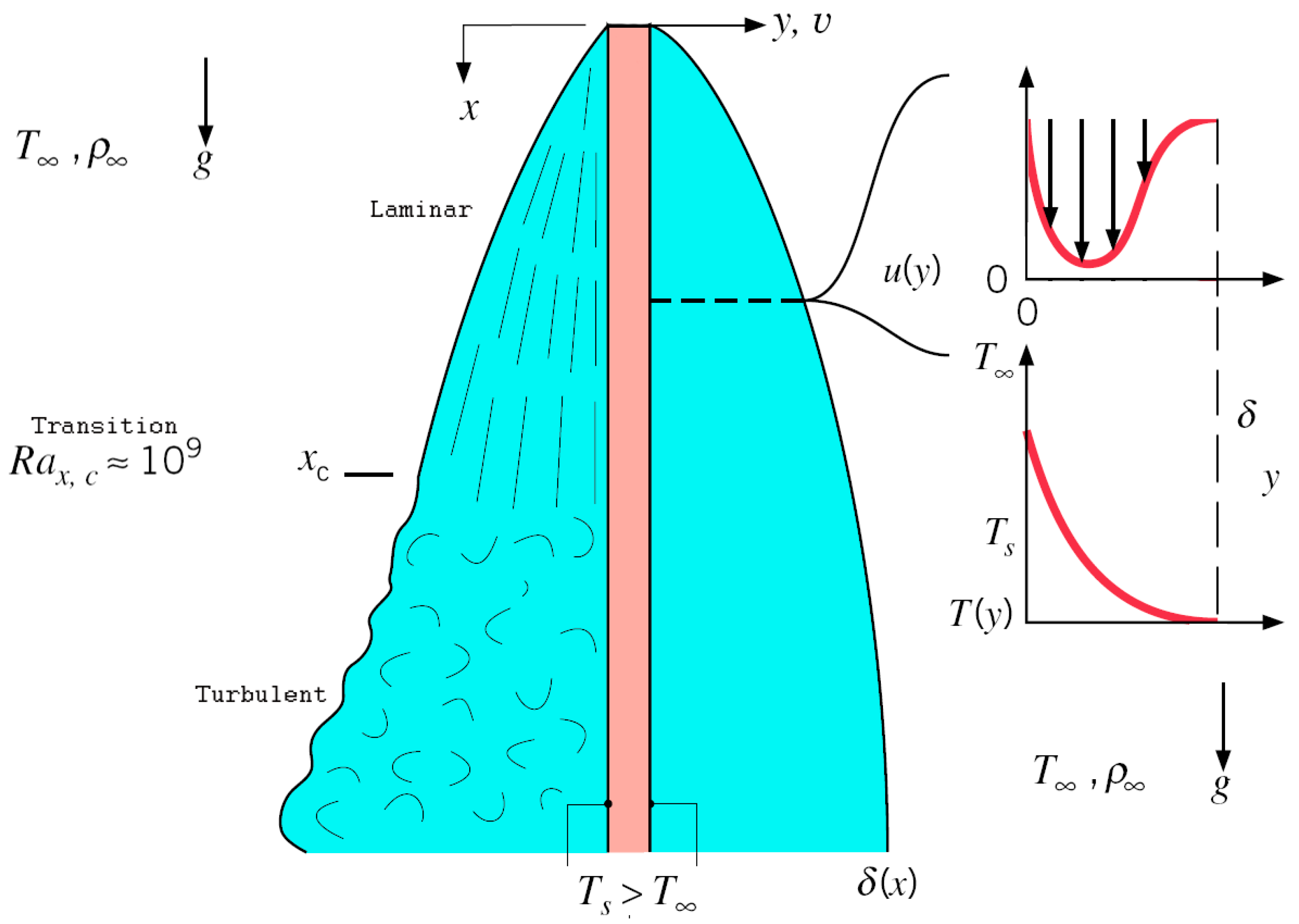
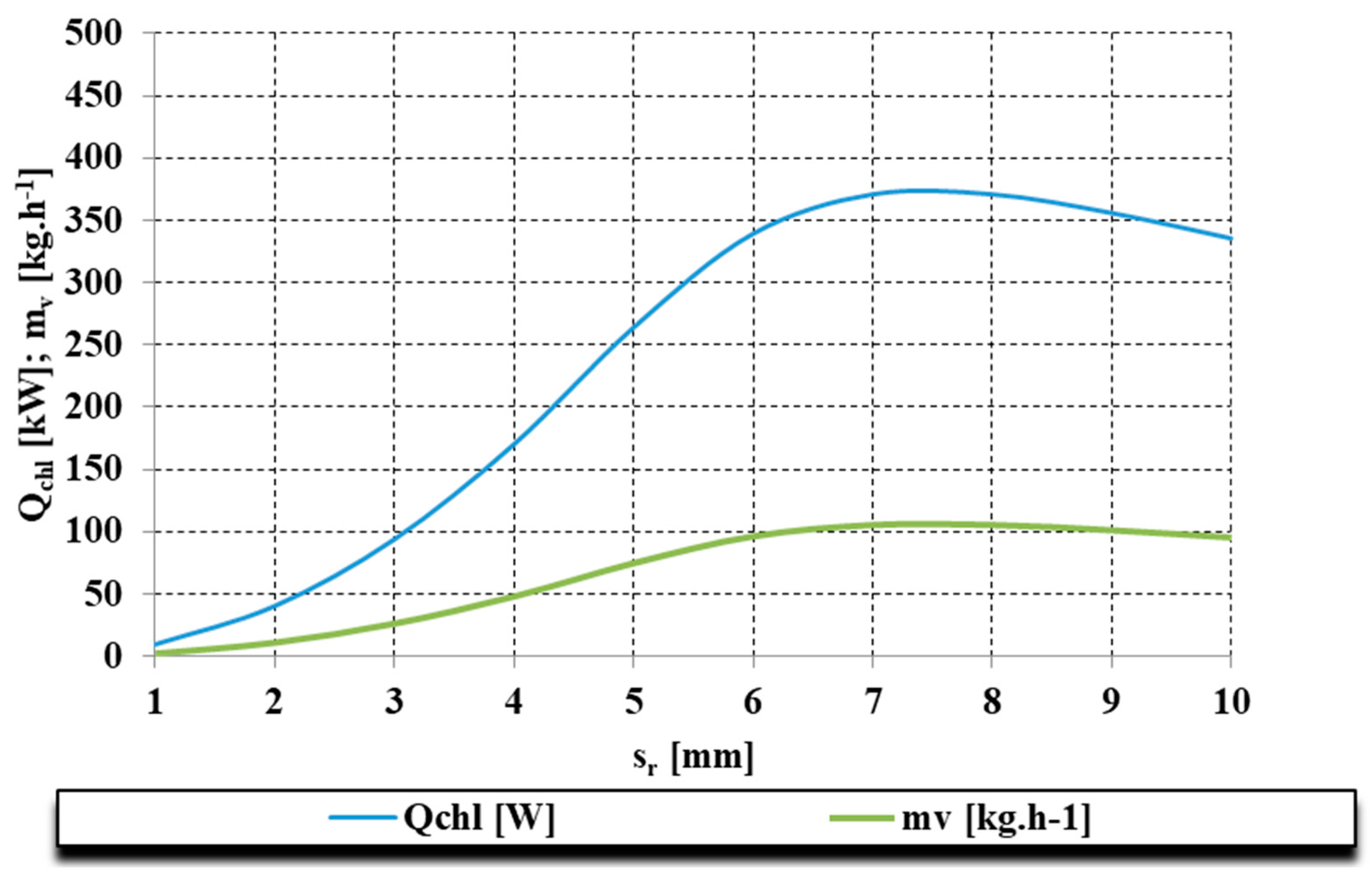

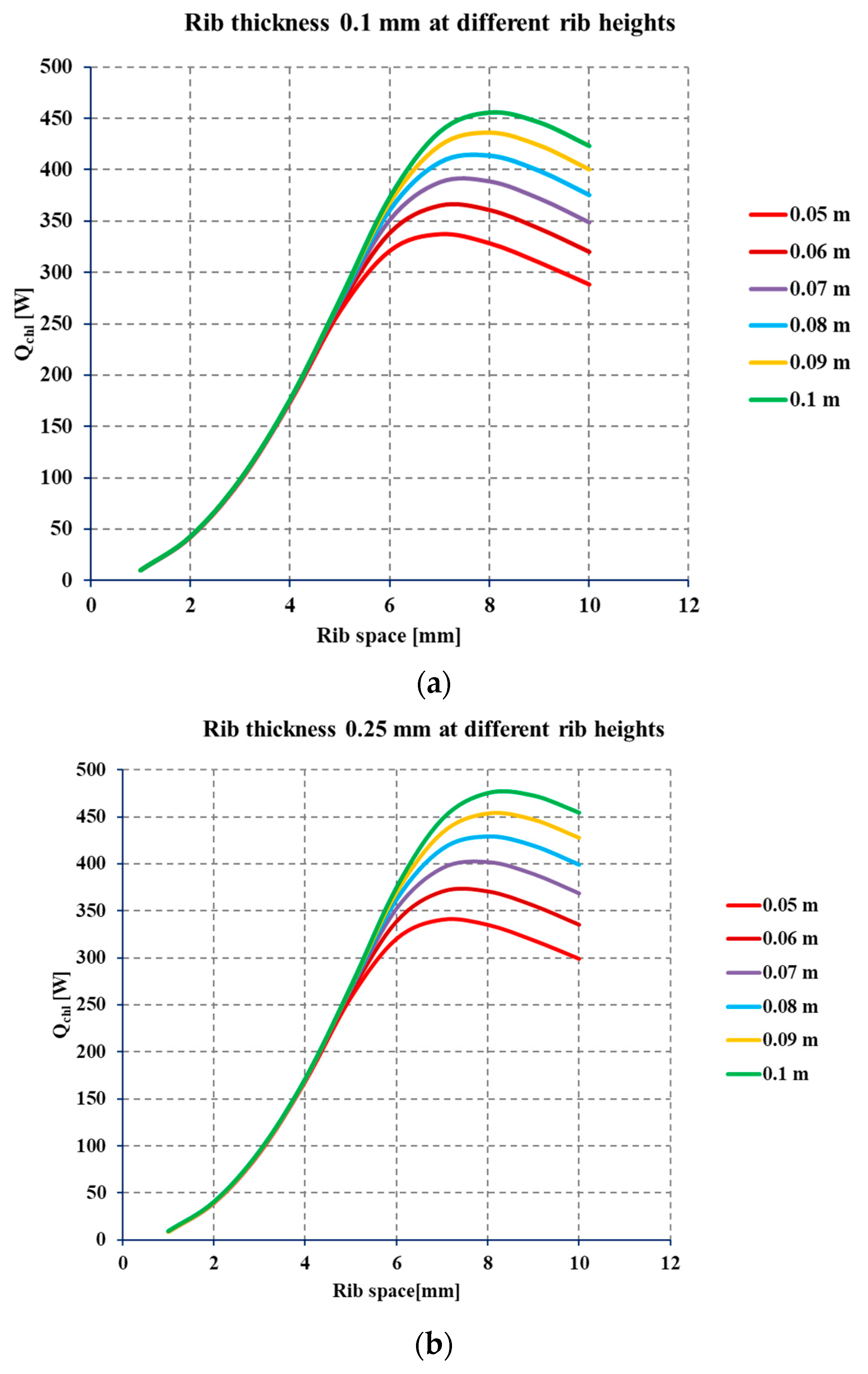

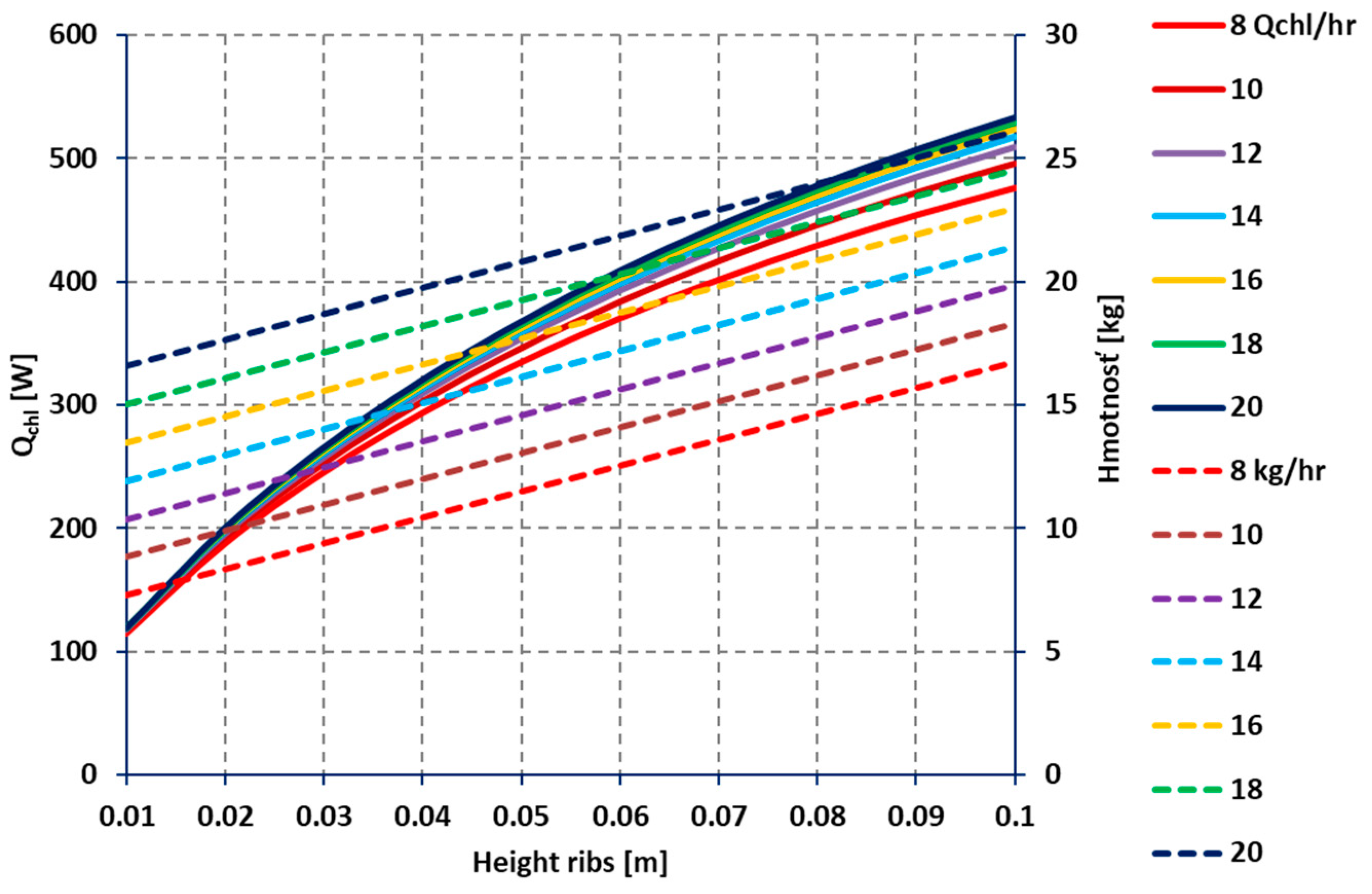

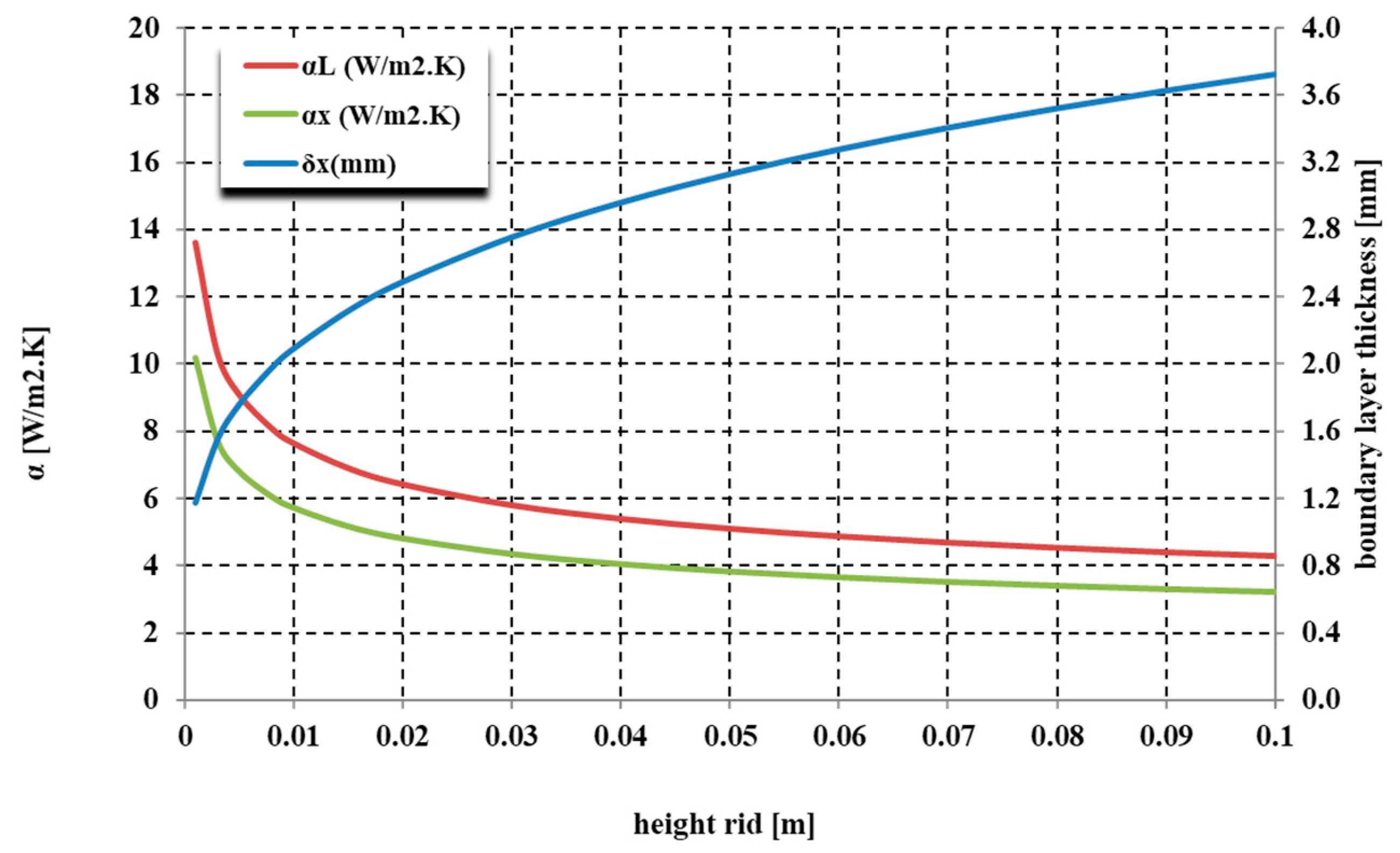
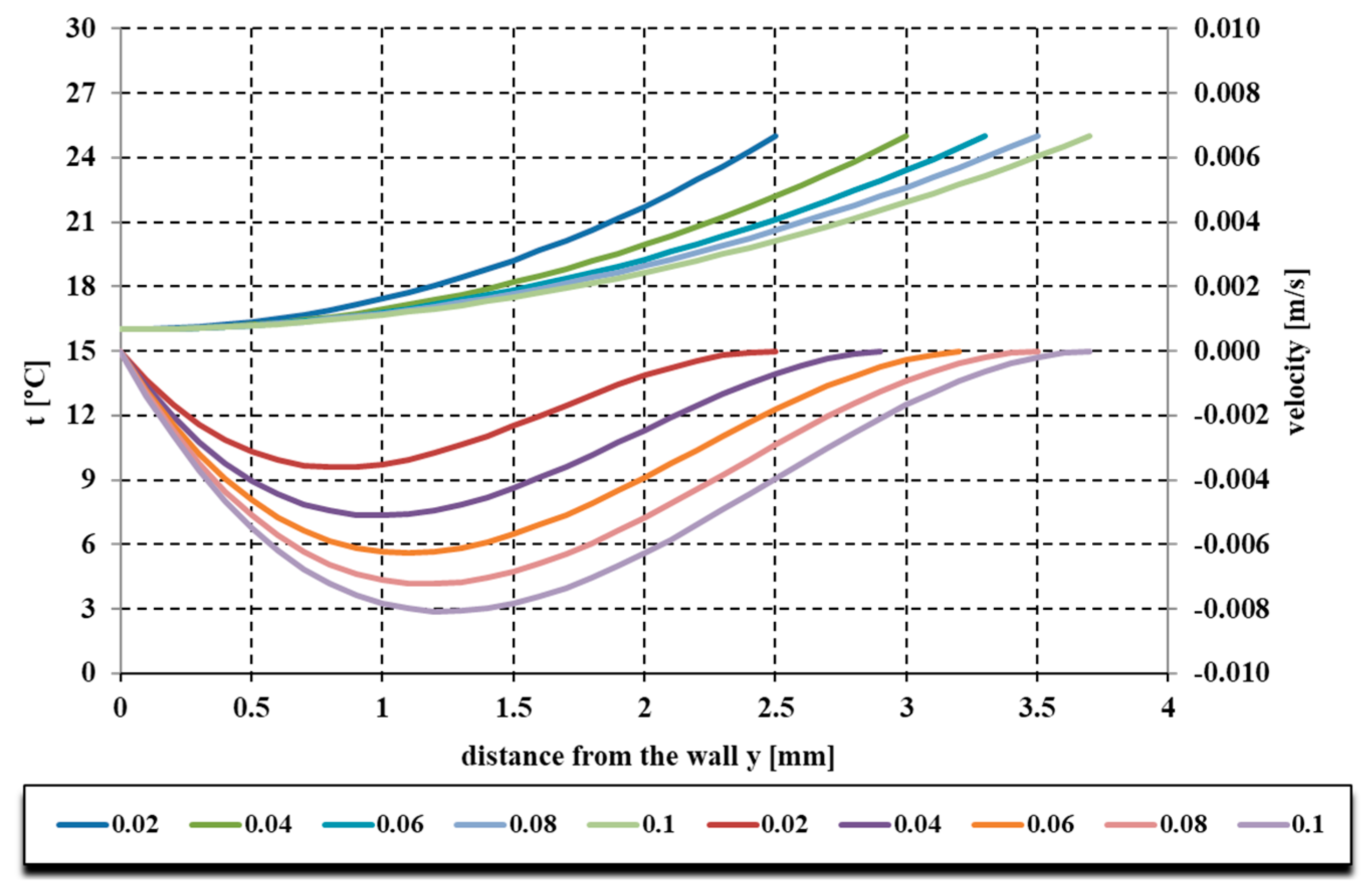
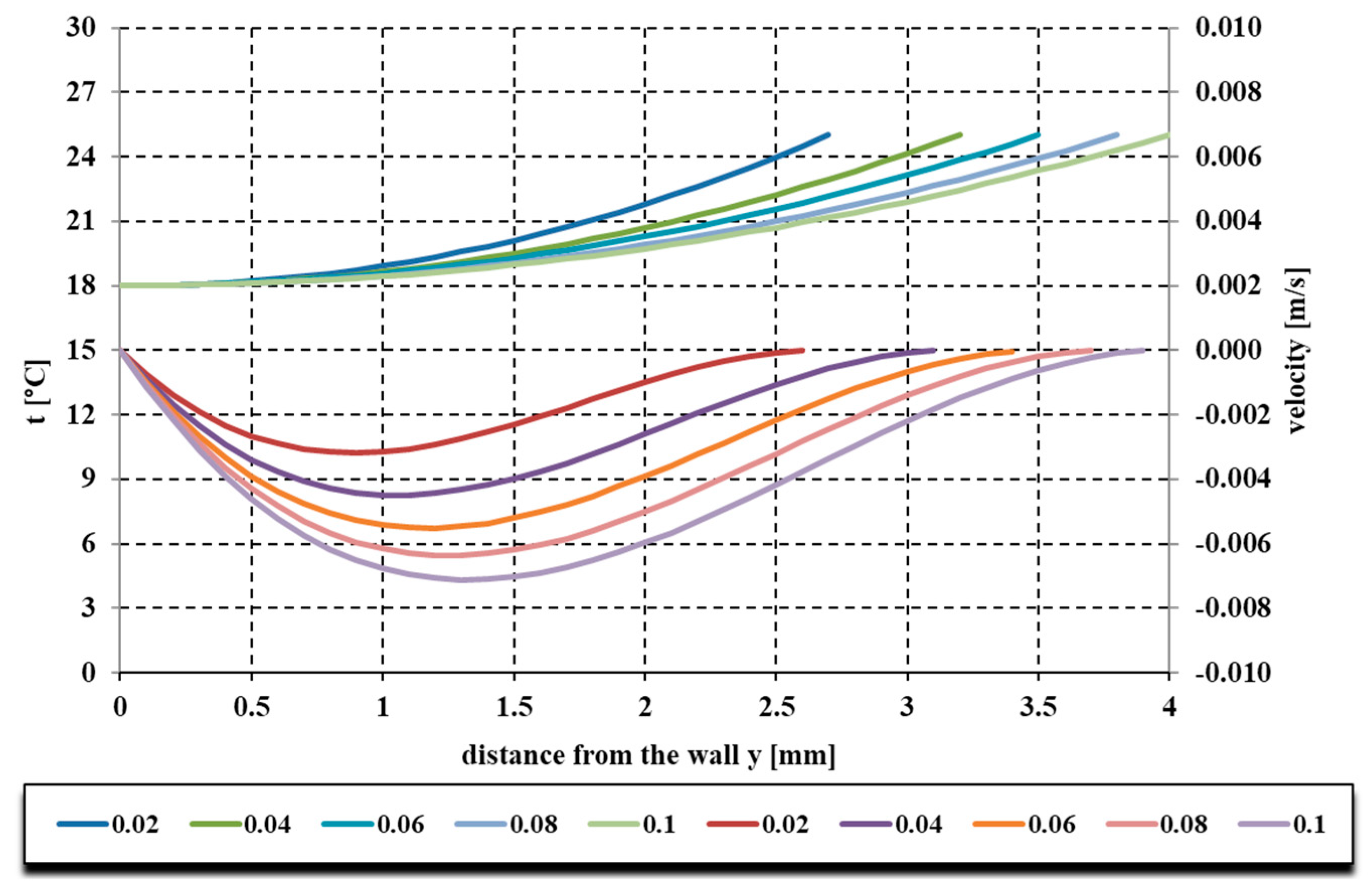
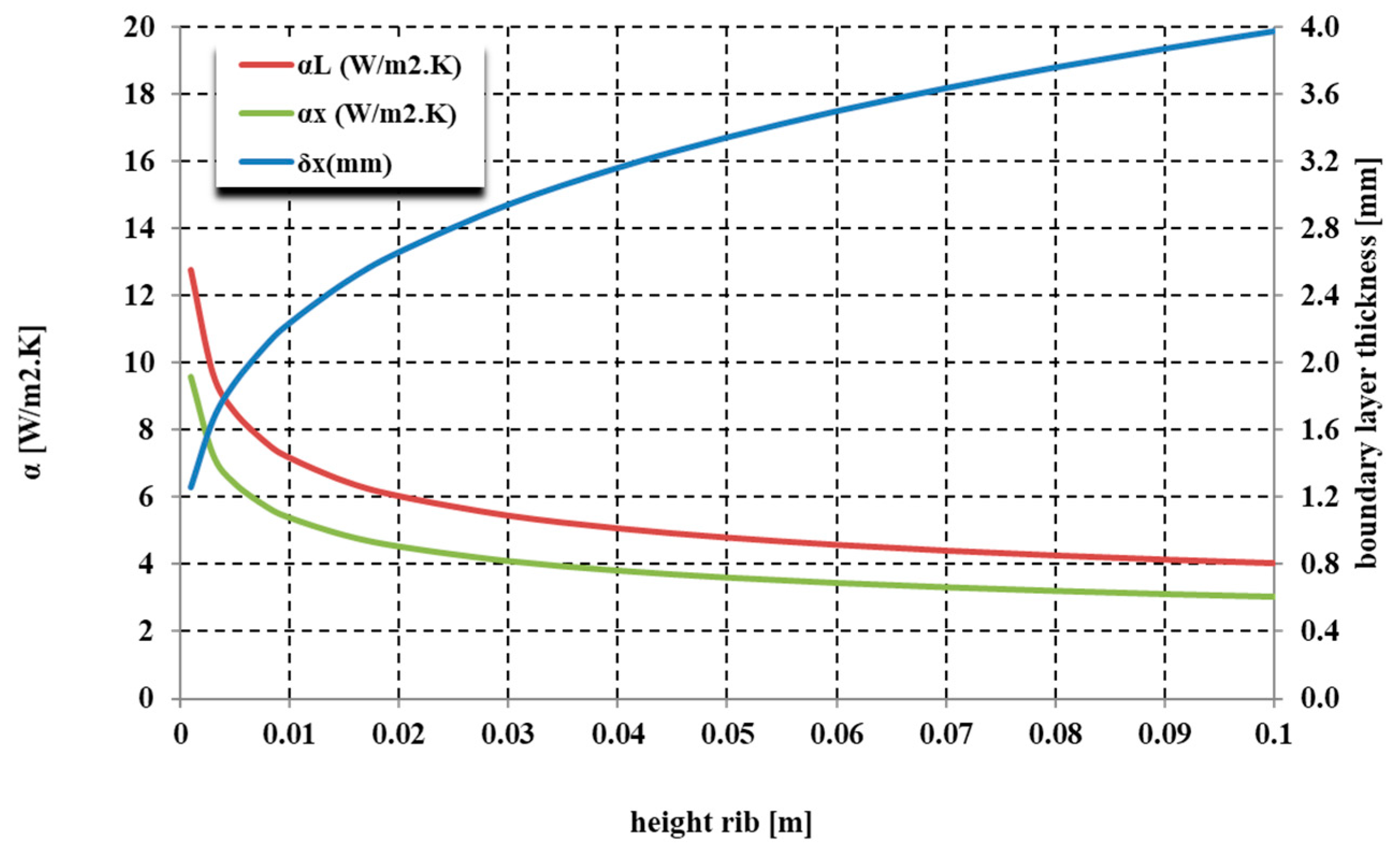
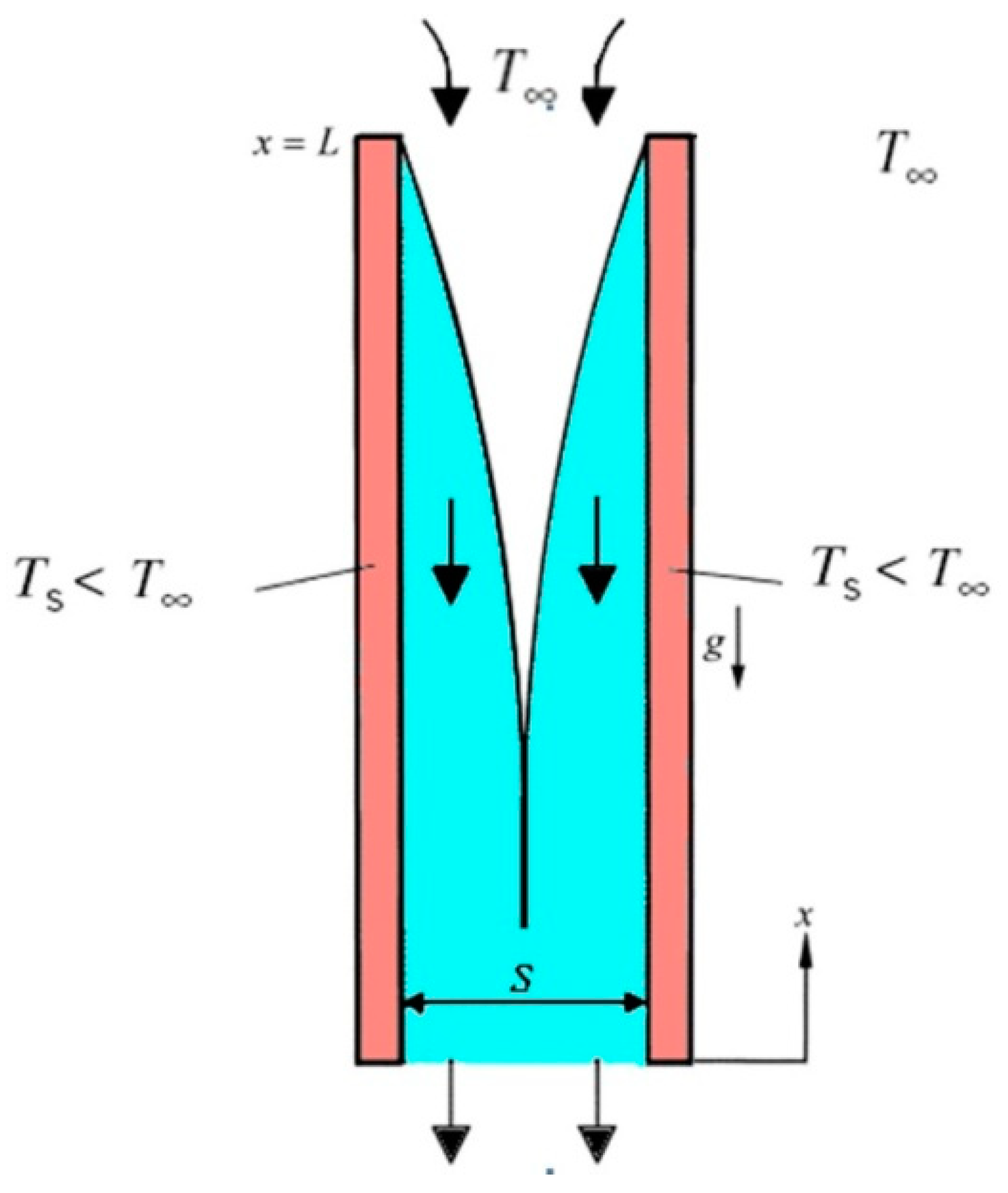


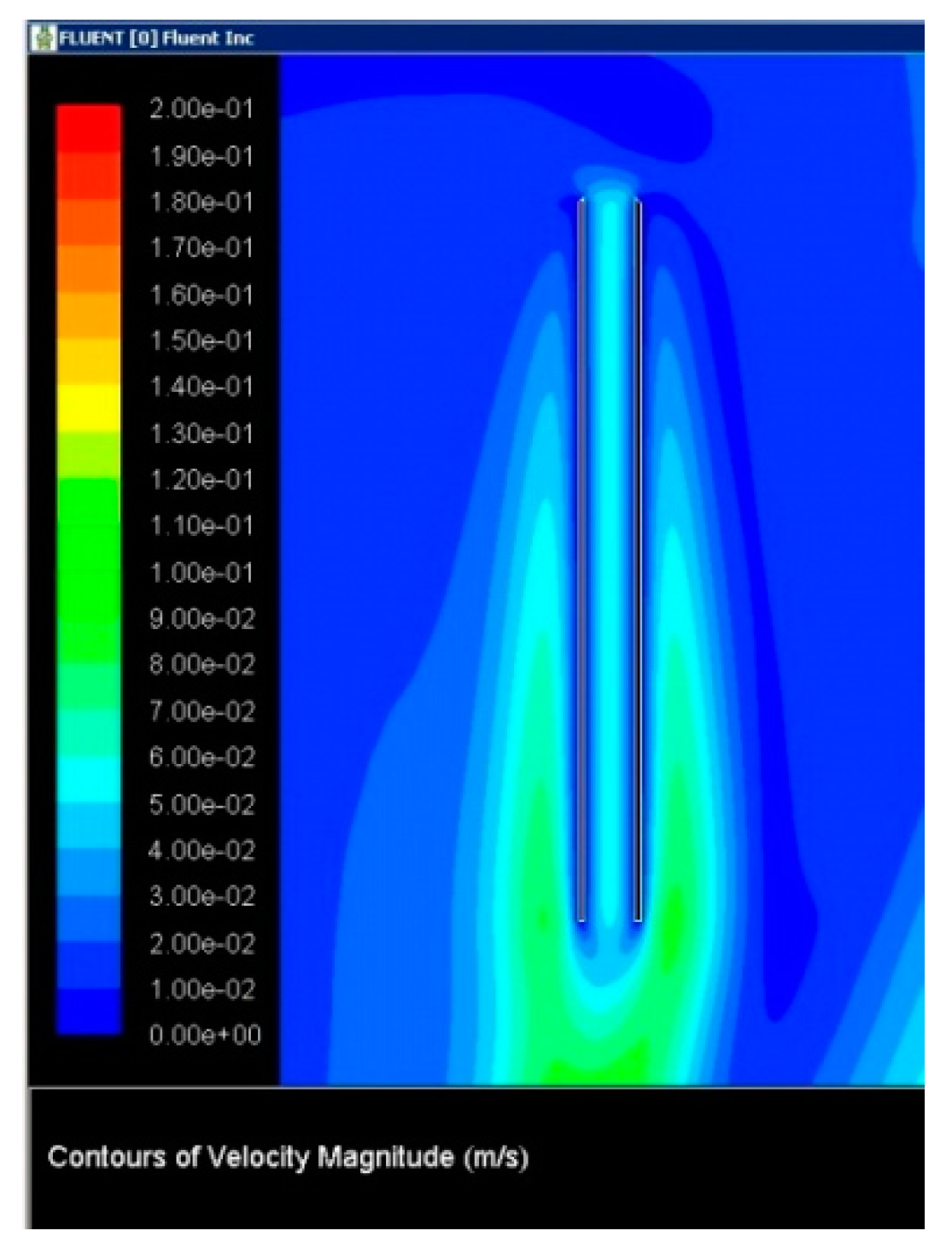
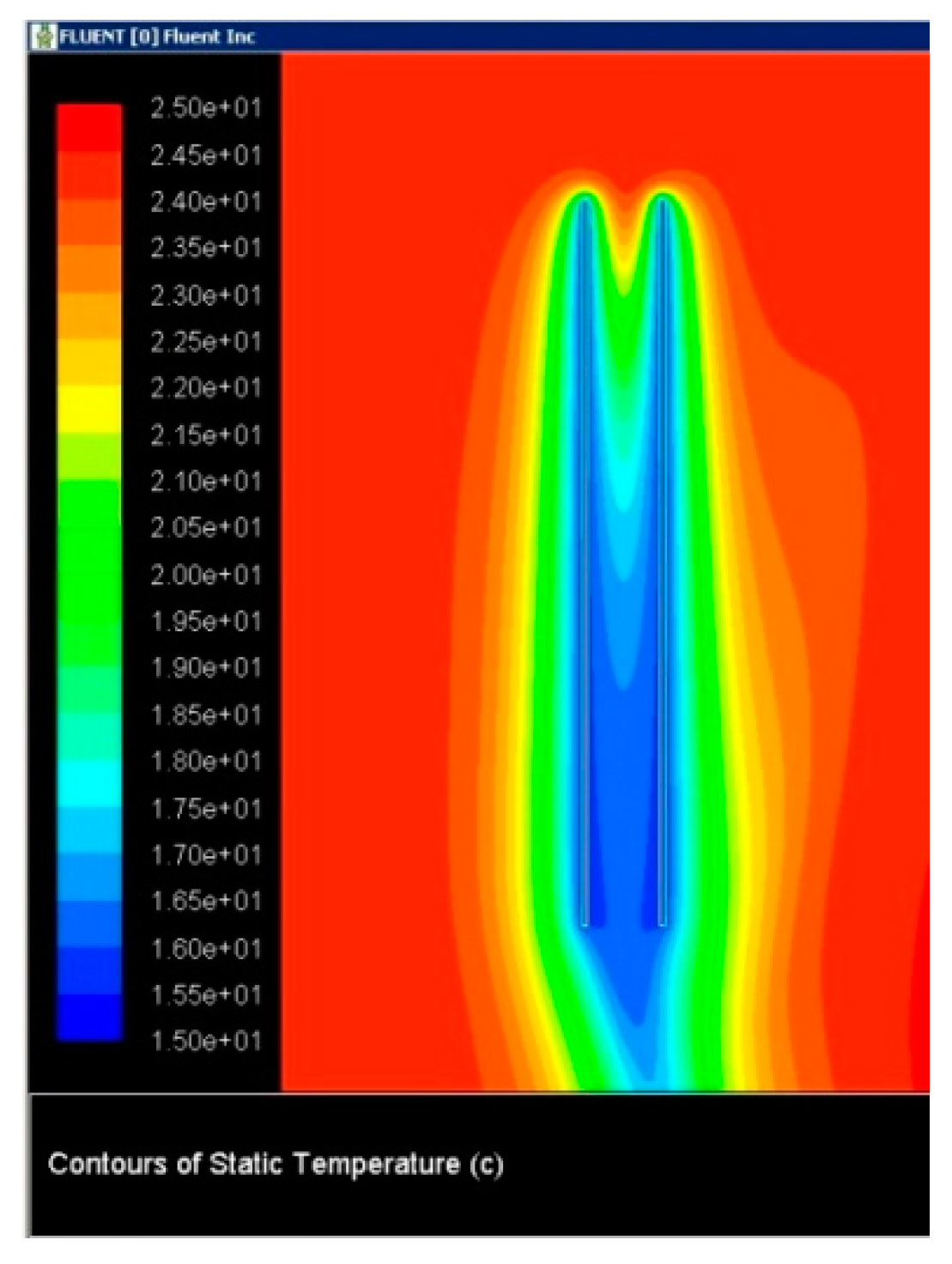

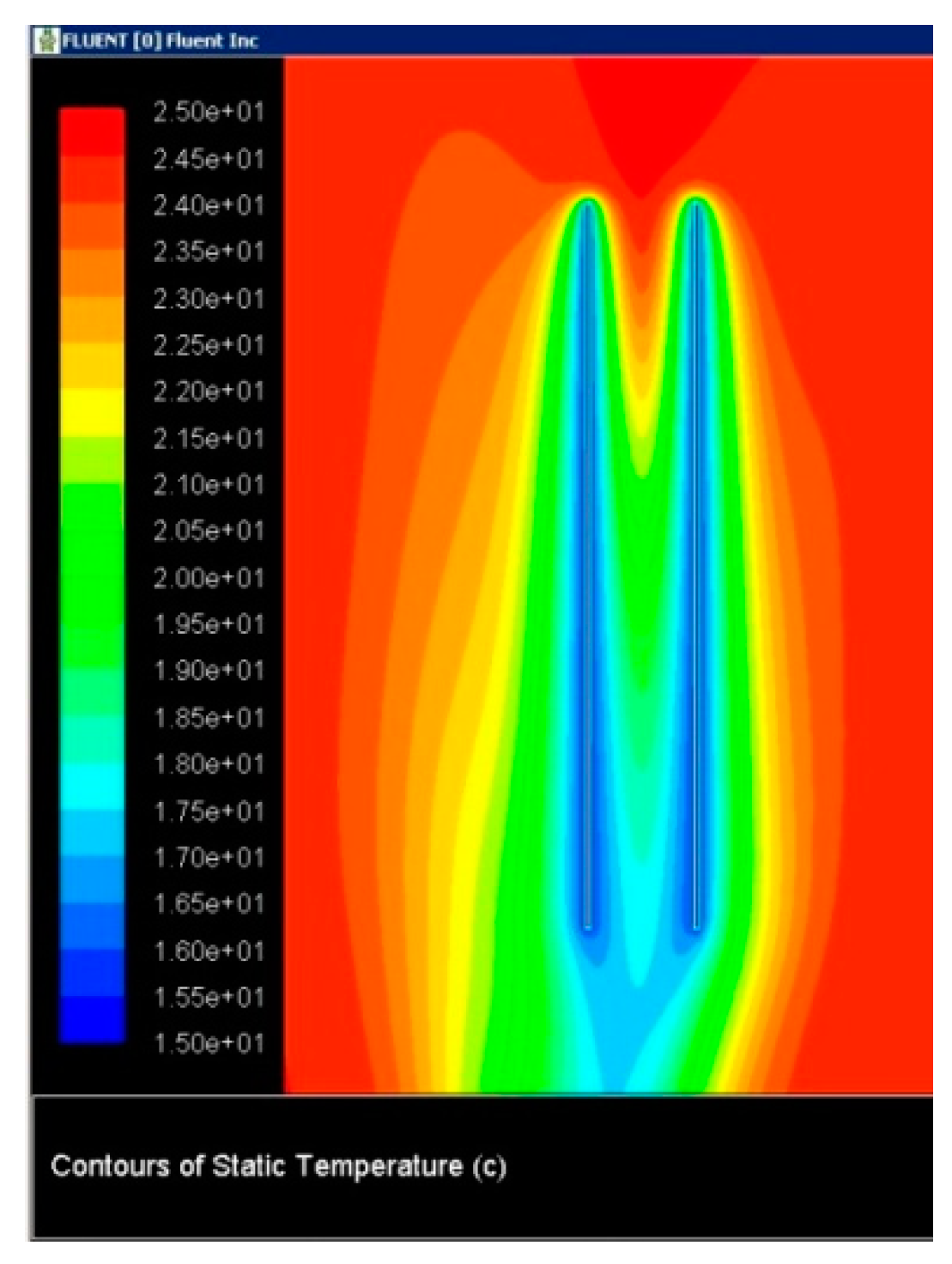
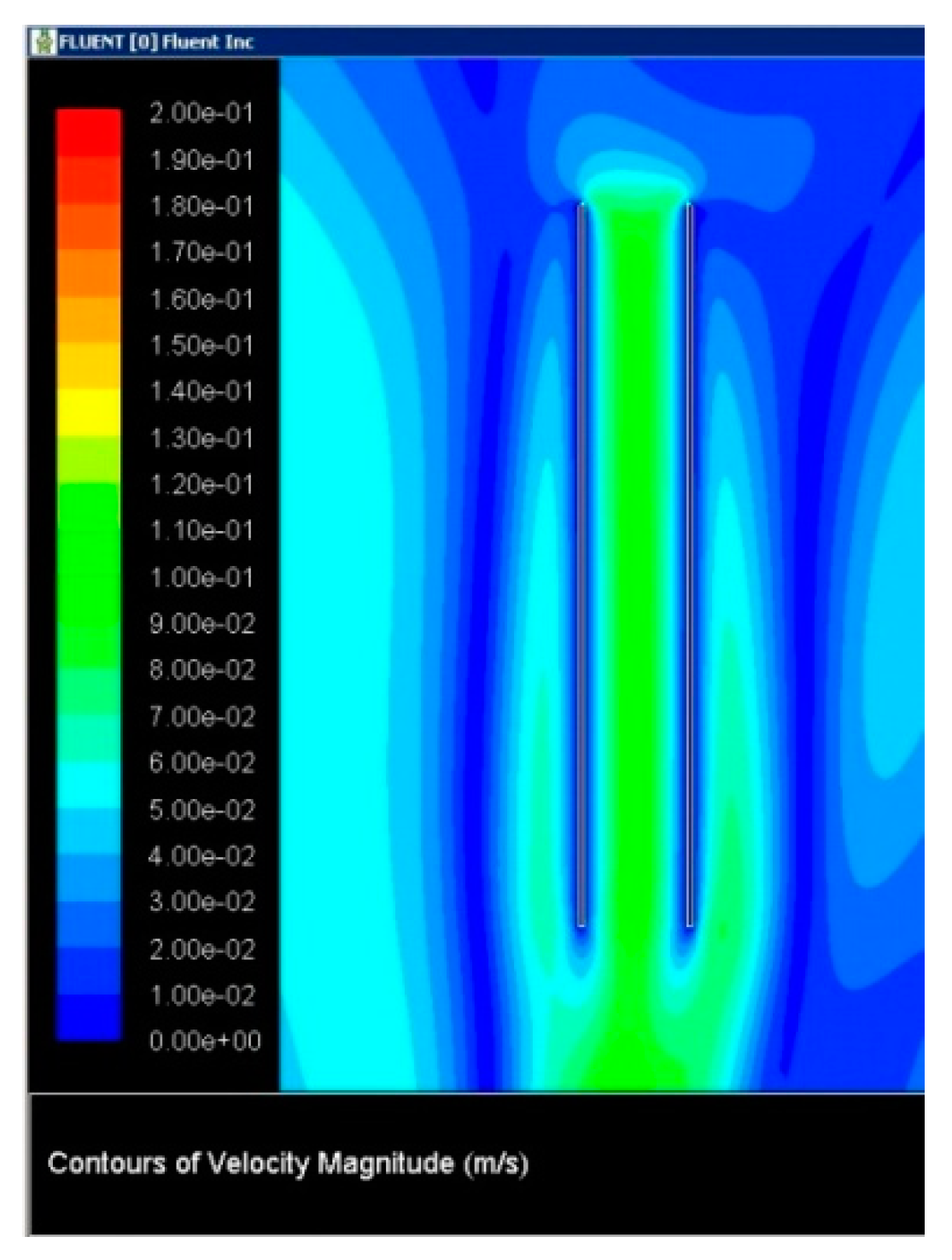
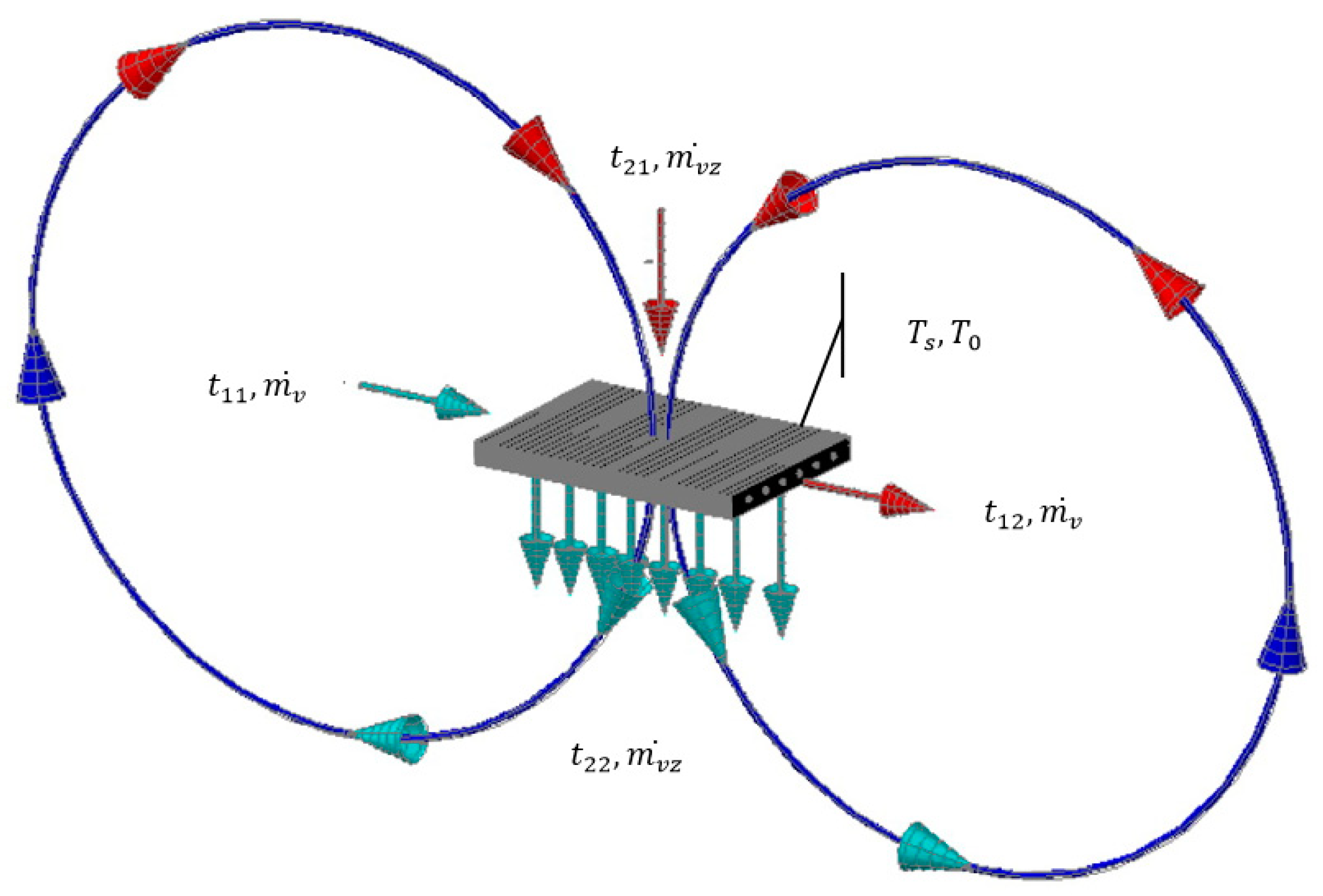

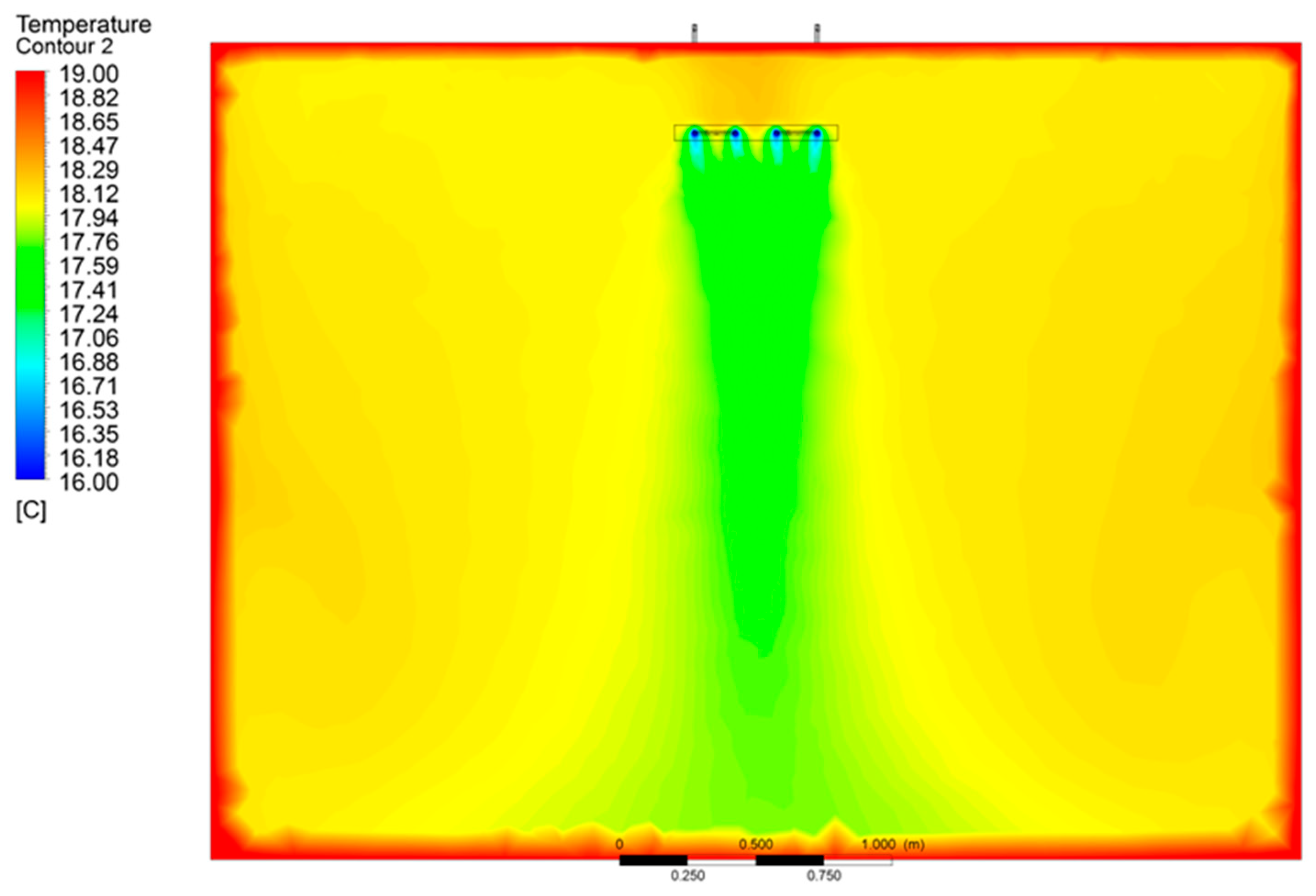
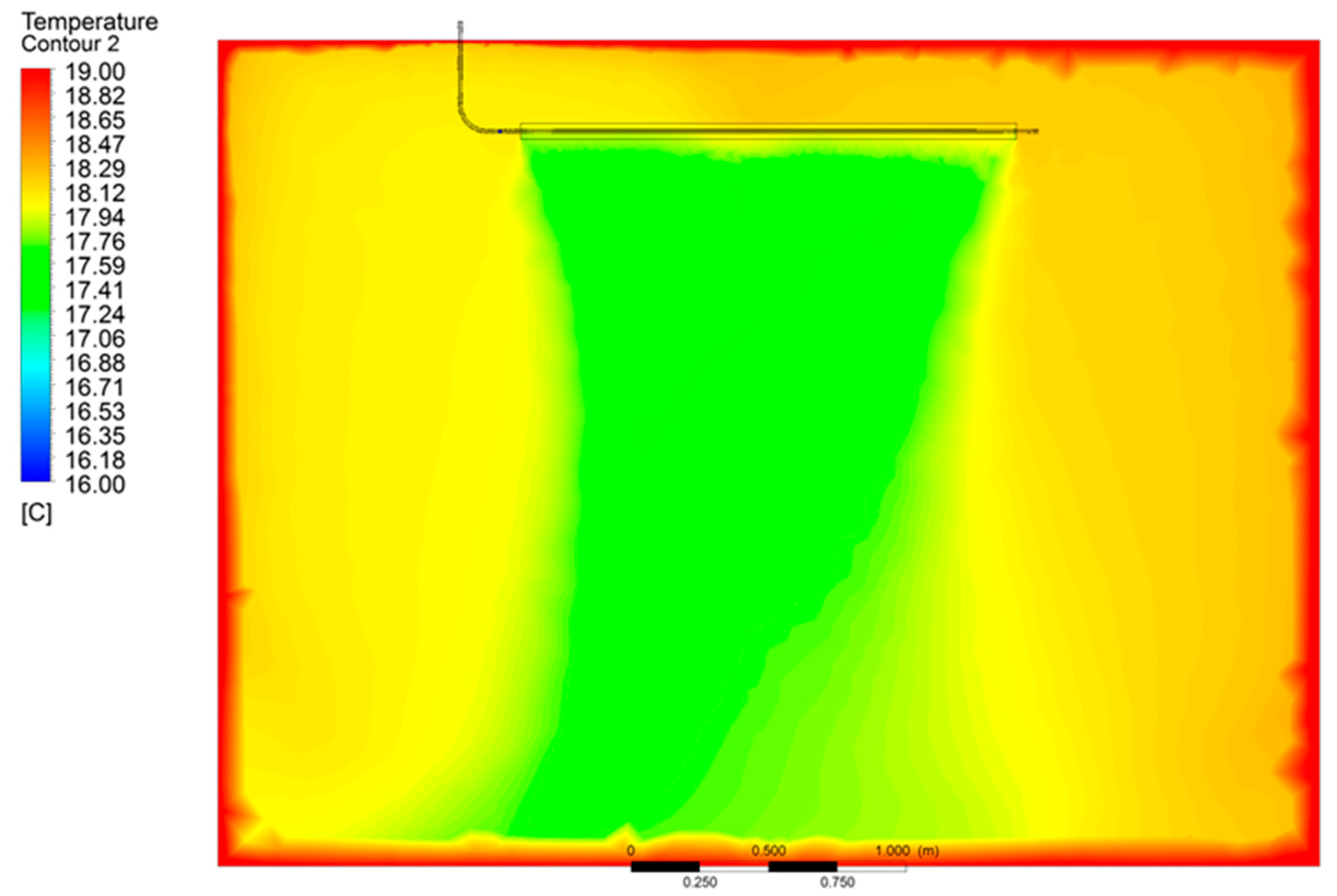
| mv (kg/s) | B-600-Lk-1800-4 | |
|---|---|---|
| 0.015 | −24.73 | −34.86 |
| 0.02 | −13.80 | −23.05 |
| 0.025 | −7.32 | −16.04 |
| 0.03 | −3.04 | −11.41 |
| 0.035 | 0.00 | −8.13 |
| 0.04 | 2.27 | −5.68 |
| 0.045 | 4.02 | −3.78 |
| 0.05 | 5.42 | −2.26 |
| 0.055 | 6.57 | −1.03 |
| 0.06 | 7.52 | 0.00 |
| Rib Space | Rib Height | |||
|---|---|---|---|---|
| 60 mm | 70 mm | 80 mm | 100 mm | |
| 5 mm | 7.01 W | 7.52 W | 7.88 W | 9.06 W |
| 7 mm | 7.24 W | 9.16 W | 9.92 W | 11.84 W |
| 10 mm | 10.03 W | 10.95 W | 12.06 W | 13.03 W |
Publisher’s Note: MDPI stays neutral with regard to jurisdictional claims in published maps and institutional affiliations. |
© 2021 by the authors. Licensee MDPI, Basel, Switzerland. This article is an open access article distributed under the terms and conditions of the Creative Commons Attribution (CC BY) license (https://creativecommons.org/licenses/by/4.0/).
Share and Cite
Kaduchová, K.; Lenhard, R. Numerical Simulation of Passive Cooling Beam and Its Optimization to Increase the Cooling Power. Processes 2021, 9, 1478. https://doi.org/10.3390/pr9081478
Kaduchová K, Lenhard R. Numerical Simulation of Passive Cooling Beam and Its Optimization to Increase the Cooling Power. Processes. 2021; 9(8):1478. https://doi.org/10.3390/pr9081478
Chicago/Turabian StyleKaduchová, Katarína, and Richard Lenhard. 2021. "Numerical Simulation of Passive Cooling Beam and Its Optimization to Increase the Cooling Power" Processes 9, no. 8: 1478. https://doi.org/10.3390/pr9081478
APA StyleKaduchová, K., & Lenhard, R. (2021). Numerical Simulation of Passive Cooling Beam and Its Optimization to Increase the Cooling Power. Processes, 9(8), 1478. https://doi.org/10.3390/pr9081478







